How I stopped worrying and learned to love the big screen.
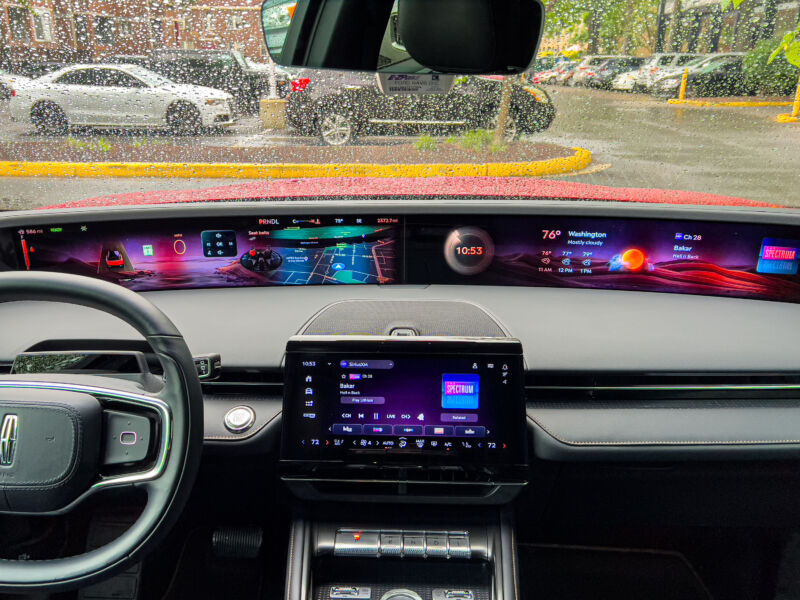
It’s important to try to approach a review car with an open mind, but I’ll admit my preconceptions were stacked against the Lincoln Nautilus. It’s on the larger end of the midsize SUV segment, bigger than I like them, and my last encounter with a Lincoln wasn’t entirely positive. And then there’s the whole giant screen. Not to be outdone by Cadillac and its 33-inch display, Nautilus has a 48-inch screen that stretches between the A pillars, which sounds like a recipe for distraction. And yet, this hybrid SUV won me over rapidly.
We tested the hybrid Nautilus, a $1,500 option for a model that starts at $50,415. The hybrid system combines a 2.0 L turbocharged four-cylinder direct-injection engine with an electric motor in parallel, sending torque to all four wheels via a continuously variable transmission. Total output is 310 hp (231 kW), with a maximum output of 300 hp (223 kW) from the internal combustion engine, or 134 hp (100 kW) from the electric motor.
It’s quite efficient, too. The EPA rates the hybrid Nautilus at a combined 30 mpg (7.84 L/100 km), although a combination of 22-inch wheels and oppressive Washington, DC, summer temperatures meant that I averaged a little bit less than that.
ARS VIDEO
How Lighting Design In The Callisto Protocol Elevates The Horror
Lincoln hasn’t disclosed a torque figure for the electric motor, but it’s easily sufficient for the task of getting the 4,517-lb (2,049 kg) SUV up and moving, both smoothly and near-silently, before the gas engine thinks about firing up. At city speeds, the electric motor does almost all of the work, at least as long as the weather isn’t too extreme—in the depths of winter and the height of summer, you can expect the engine to fire up more often unless you turn off the heater or AC.
- I’m not the biggest fan of the exterior styling, but this was a very good metallic red paint. Jonathan Gitlin
- On the other hand, I am a fan of the interior, except for the placing of the touchscreen. Jonathan Gitlin
- There’s quite a lot of room in the rear. Jonathan Gitlin
- The Nautilus starts at just over $50,000, but you can spend a lot more than that depending on options and trim level. Jonathan Gitlin
- Note the door handles that stick up and out from the side. Jonathan Gitlin
- This might be the best Lincoln I’ve driven. Jonathan Gitlin
- The backup camera shows up where you normally see your map. Jonathan Gitlin
- The Lincoln emblem is illuminated. Jonathan Gitlin
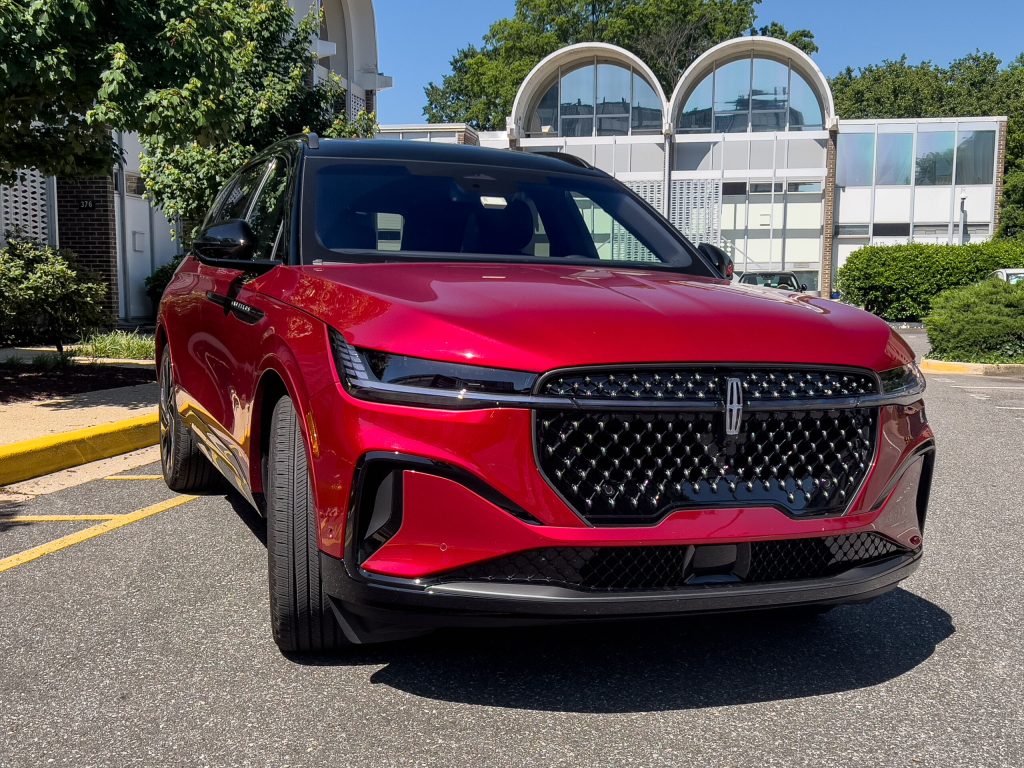
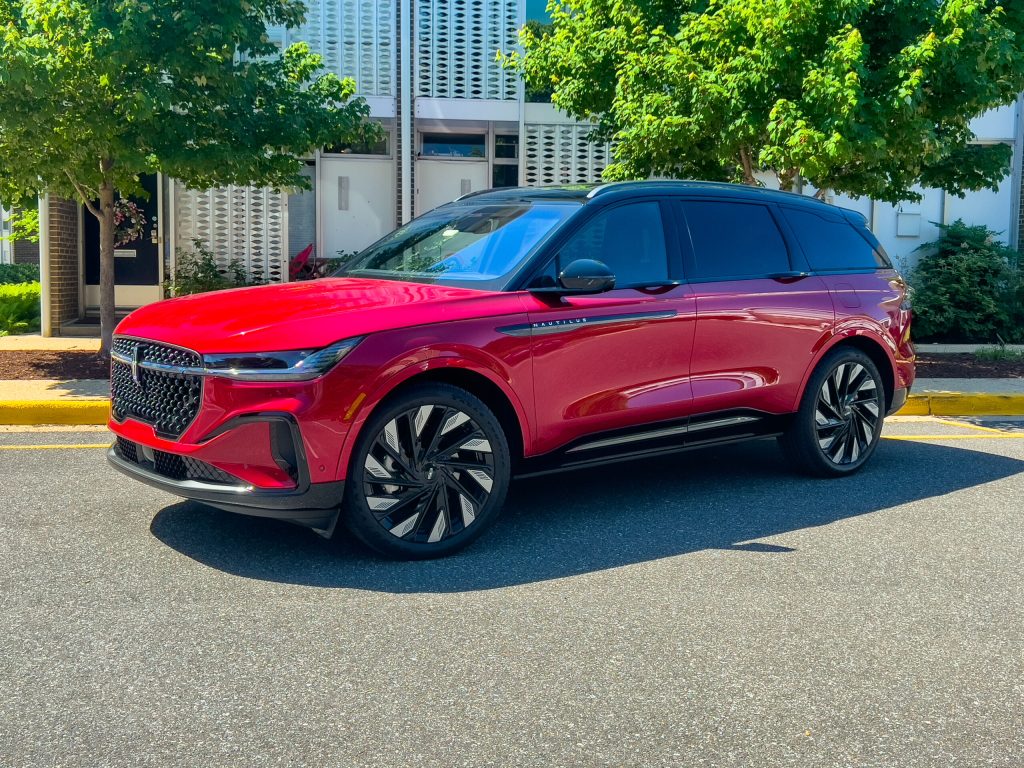
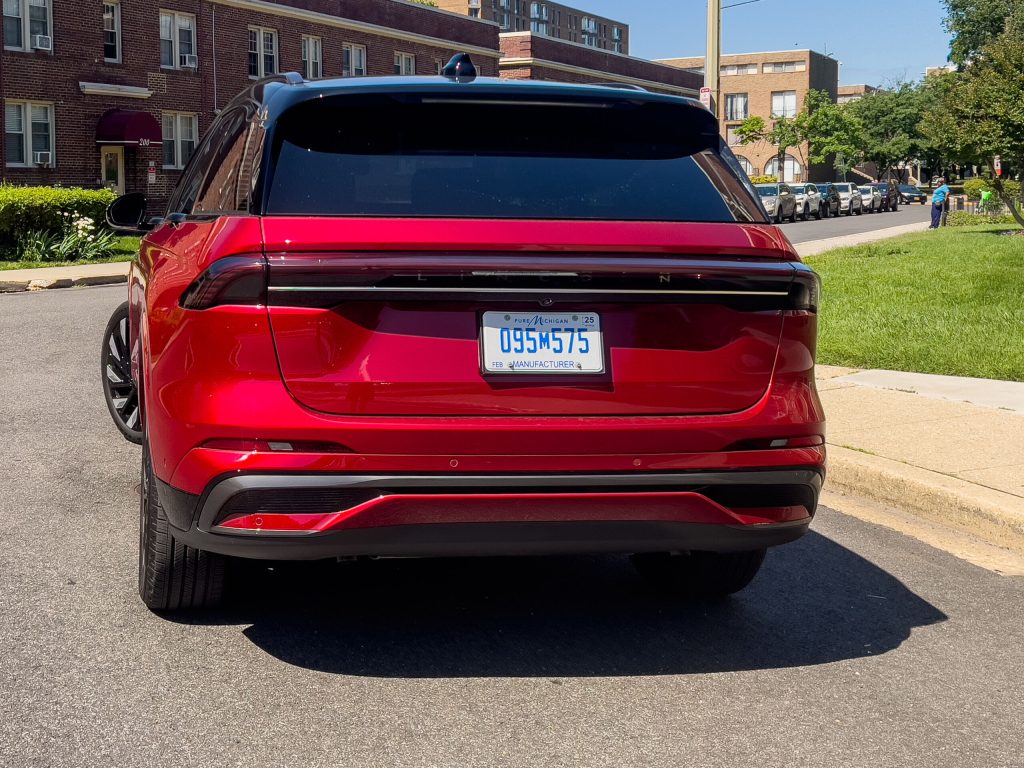
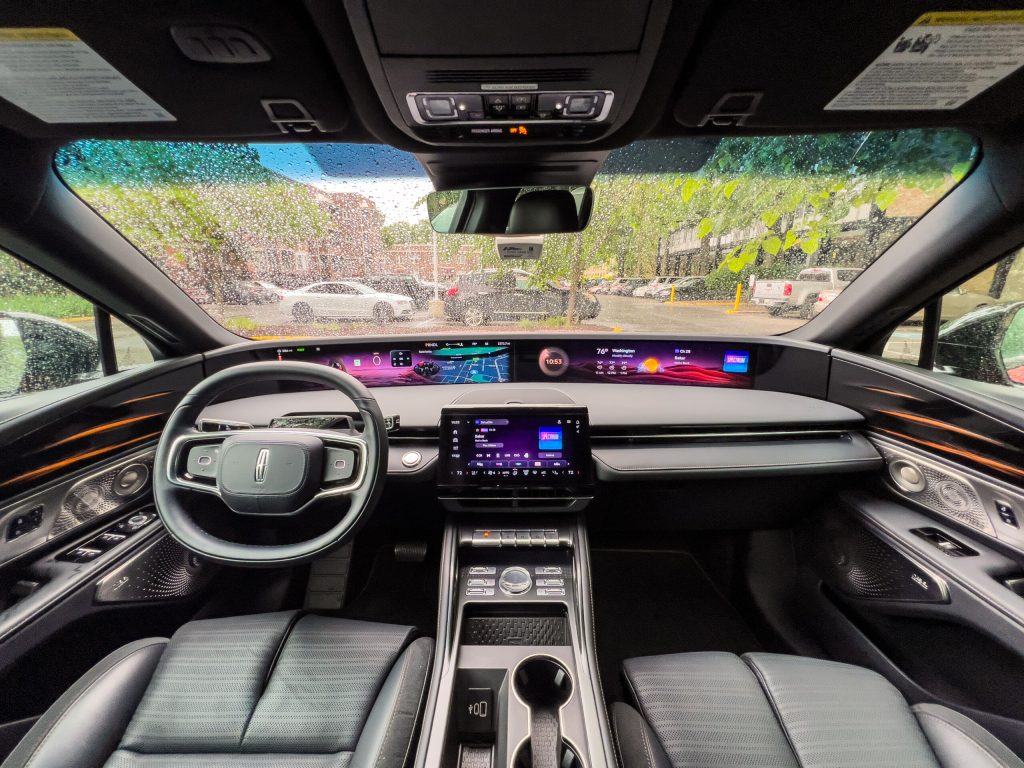
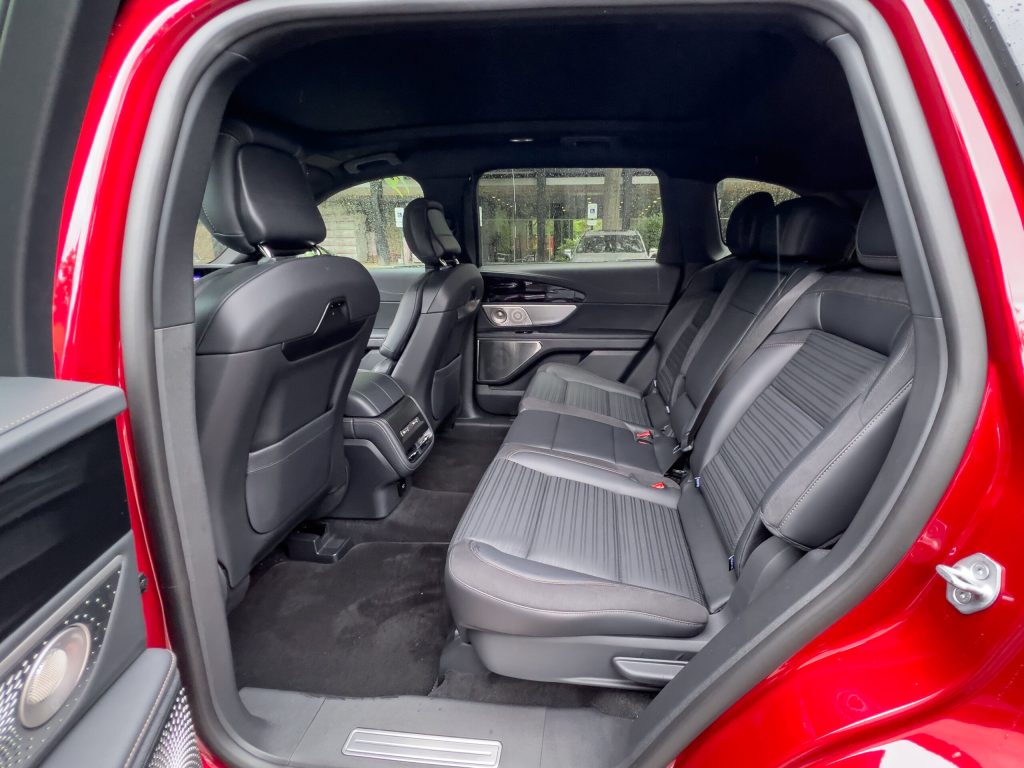
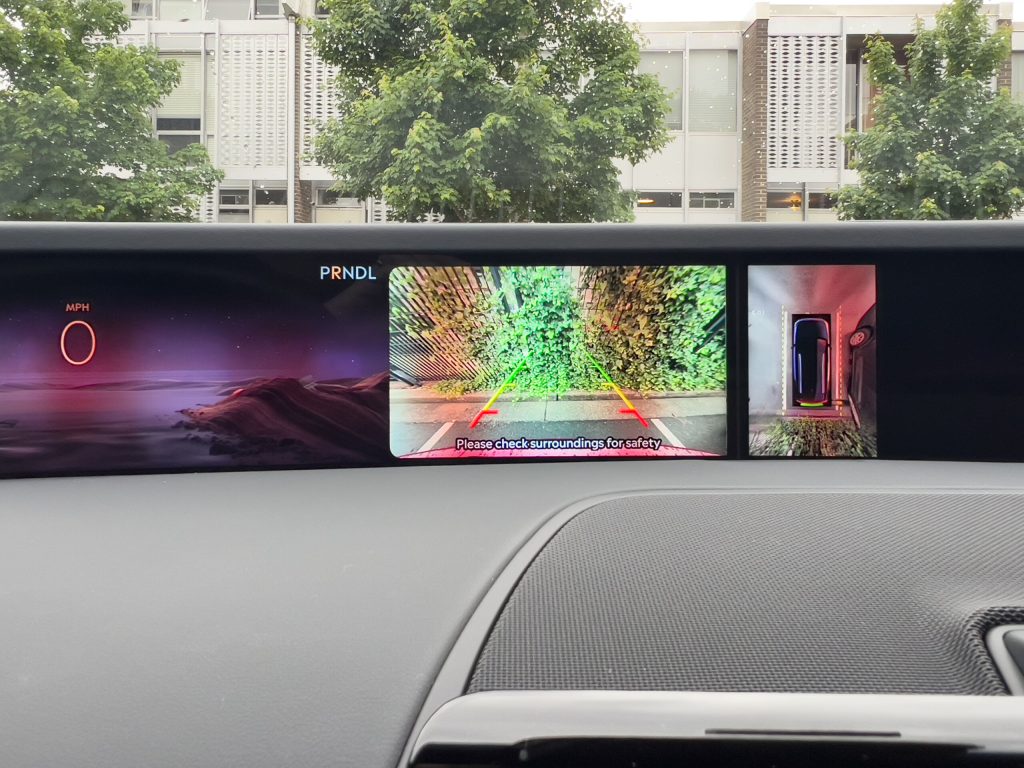
It’s a car that seems to encourage you to relax a bit and not be in quite so much of a hurry behind the wheel. That impression was helped by the seats, which offer plenty of adjustment and one of the best massaging functions you’ll currently find on four wheels. There’s even an optional digital scent diffuser.
Ride comfort was more than acceptable, despite the huge wheels, and the oblong-ish steering wheel never requires very much effort thanks to plenty of assist from the power steering. If the point of a luxury car is to pamper its occupants while they are transported from A to B, then the Nautilus should be considered quite luxurious.
OK, but that’s a giant screen
There are some interesting design touches throughout the Nautilus, but they’re mostly overshadowed by that panoramic screen. It lives at the base of the windshield and is split into zones. In front of the driver, there’s the equivalent of a main instrument display, which, in typical Lincoln fashion, is actually quite minimalist in terms of the information it provides. You see your speed here, as well as any driver assists and warning icons.
Next is the navigation map, which subtly blends in from the right. Google Maps is the default option since Lincoln’s Digital Experience infotainment system is Android Automotive OS-based, but if you connect an Apple iPhone via (wireless) CarPlay and use Apple Maps, this will be projected into that space instead. The positioning of the map is well-placed in your line of vision so that you’ll see the directions without taking your eyes far from the road ahead.
The remaining three zones are user-configurable, but none of the options are particularly information-dense. You can display widgets like a trip computer, the weather, a clock, what media is playing, and so on.
And happily, it actually works quite well. The info you can put on the far reaches of the panoramic display isn’t the sort of stuff you’ll constantly be looking at while driving, and you mostly take it in through the corner of your eye since the instrument panel is closer to your eyeline than most others.

And this makes the positioning of the 11.1-inch touchscreen for the infotainment system even more unfortunate. This screen, I found, was too close to me in the driver’s seat, and compared to the panoramic display, not ideal for trying to follow navigation directions. Lincoln has built Alexa as well as Google’s voice assistant into the infotainment system, although I still don’t find either as capable as infotainment systems that use Terence’s voice recognition technology.
The Nautilus includes the latest version of BlueCruise, a hands-free driver assist that will operate on geofenced highways, replacing the normal adaptive cruise control and lane keeping. In northern Virginia, at least, GM’s Super Cruise appears to be able to be engaged in more places along the same routes, but I give points to BlueCruise for a UI that makes it very clear when the system is engaged and when it isn’t.
I was oddly wistful to see the Nautilus leave after its week-long test, despite the fact that such a car is frankly too big for my lifestyle. I was never hugely enamored with the way it looks on the outside, other than the rather interesting door handles. But it was a pleasure to drive on mundane journeys, and that panoramic screen actually brightened my days. I hope Lincoln rolls that feature out to other cars in its range.




